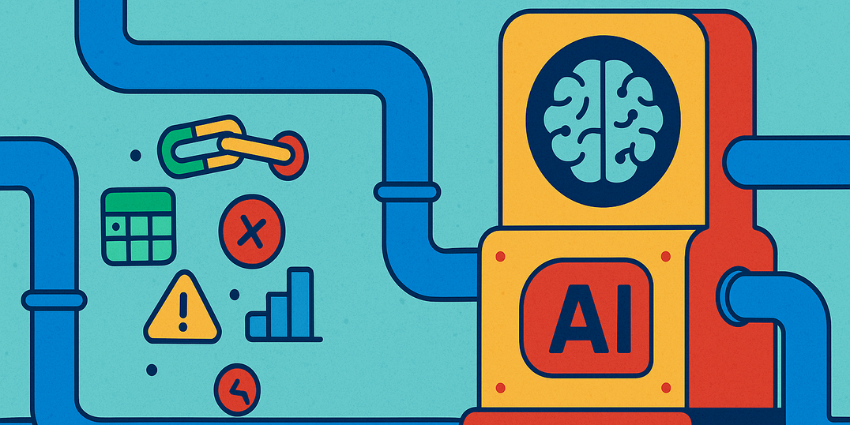So, how do you use CRM?
In simple terms, it involves using technology to organize, automate, and synchronize sales, marketing, customer service, and technical support.
At the core of CRM software is a centralized database that allows teams across different departments to access up-to-date information about customers at any time. Armed with this comprehensive view of a customer’s journey with the product or brand, organizations can tailor their interactions for more personalized experiences.
CRM Glossary: Terms You Need to Know to Use CRM Effectively
Understanding the following key terms will help you make the best use of CRM:
- Leads: A lead refers to a potential customer who has shown interest in your product or service. Marketing qualified leads (MQL) are prospects that have engaged with your marketing efforts but may not be ready to make a purchase yet. Sales qualified leads (SQL) have been deemed ready for direct sales follow-up based on specific criteria set by your sales team.
- Contact: A ‘Contact’ refers to an individual or organization that your business interacts with. These contacts can be leads, customers, partners, or any other relevant entity that plays a role in your business activities.
- Deal and deal stage: A deal represents a potential sales opportunity between your business and a customer. Deal stages denote the various phases within the sales process that a deal passes through – e.g., prospecting, qualification, proposal, negotiation, and closure.
- Sales pipeline: This is a visual representation of your sales process, breaking down the customer journey into distinct phases – from initial contact to closing the deal.
- Customer cases: A case refers to a record that tracks interactions and resolutions/remediations related to a specific customer issue or request.
- BANT: BANT stands for Budget, Authority, Need, and Timeline, a framework that helps sales teams qualify leads effectively.
- CHAMP: It stands for Challenges, Authority, Money, and Prioritization, another framework for lead qualification.
How to Use CRM? 6 Steps
To effectively use CRM software, follow these six key steps.
1. Import CRM information
Transfer existing data such as customer contacts, leads, and deals into the system. Before importing any data, clean and organize it to avoid duplicates or errors. Make sure to map the fields correctly – i.e., match fields like name, email address, phone number, etc., between your existing database and the CRM system.
2. Add your users
Salespeople should be able to input data on leads and deals directly into the CRM platform. Marketers must be able to track campaigns and analyze customer interactions to tailor strategies for better engagement. Service agents must access customer information quickly to provide personalized support and enhance customer satisfaction.
When adding users to your CRM system, make sure each member receives adequate training to maximize their usage of the platform.
3. Set up CRM workflows
Start by identifying key stages in your sales or service process. Map out how leads move through these stages and determine what actions need to be taken at each step.
Next, establish triggers that will automatically initiate workflow actions based on specific criteria being met. Customize your workflows — tailor notifications, assignments, and approvals to align with your team’s workflow preferences for enhanced productivity.
4. Customize security settings
Set up user permissions and access levels – this lets you control who can view, edit, or delete information within the CRM system. Customizing security settings also allows you to comply with data protection regulations such as GDPR or HIPAA. You can configure rules for password complexity, session timeouts, IP restrictions, and more to enhance the overall security of your CRM platform.
5. Integrate other tools
By connecting CRM with tools like email marketing platforms, social media management software, and customer support systems, you can centralize all important information in one place. Additionally, integrating project management tools or accounting software with your CRM can help in tracking client projects or managing financial transactions more efficiently.
6. Schedule reports
Once you have set up your CRM software and have entered all the necessary data, schedule reports regularly. Customize these reports based on various criteria such as sales numbers, lead generation rates, customer satisfaction scores, and more. Whether it’s daily, weekly, or monthly reporting schedules, always maintaining this practice will enable you to make informed decisions.
Do’s and Don’ts for Using CRM Effectively
When you use the CRM, make sure that you:
- DO leverage CRM automation to streamline repetitive tasks and enhance productivity. By automating data entry, email campaigns, and follow-up reminders, you can free up time for your team to focus on building relationships with leads and customers.
- DO segment the audience using CRM data to personalize communication and tailor marketing efforts. By categorizing contacts based on demographics, behavior, or preferences, you can send targeted messages that resonate with their needs.
- DON’T expect immediate ROI after you start using CRM. It takes time to see the full benefits of implementing a CRM system. Patience is key as you nurture leads through the sales funnel and build long-lasting customer relationships.
- DON’T overcomplicate CRM workflows by adding unnecessary steps or fields. Keep it simple and user-friendly to encourage adoption across your team members. Complex systems may lead to confusion and resistance in using the tool effectively.
What Next? CRM KPIs You Should be Measuring
As you continue to enhance your CRM usage and maximize its potential, tracking the right key performance indicators (KPIs) is crucial. By measuring metrics such as conversion rates, customer retention, sales growth, and lead response time, you can gain valuable insights into your strategy – and figure out how to use the CRM even more effectively.
Did you enjoy this article? Follow us on social media for more such insights.







